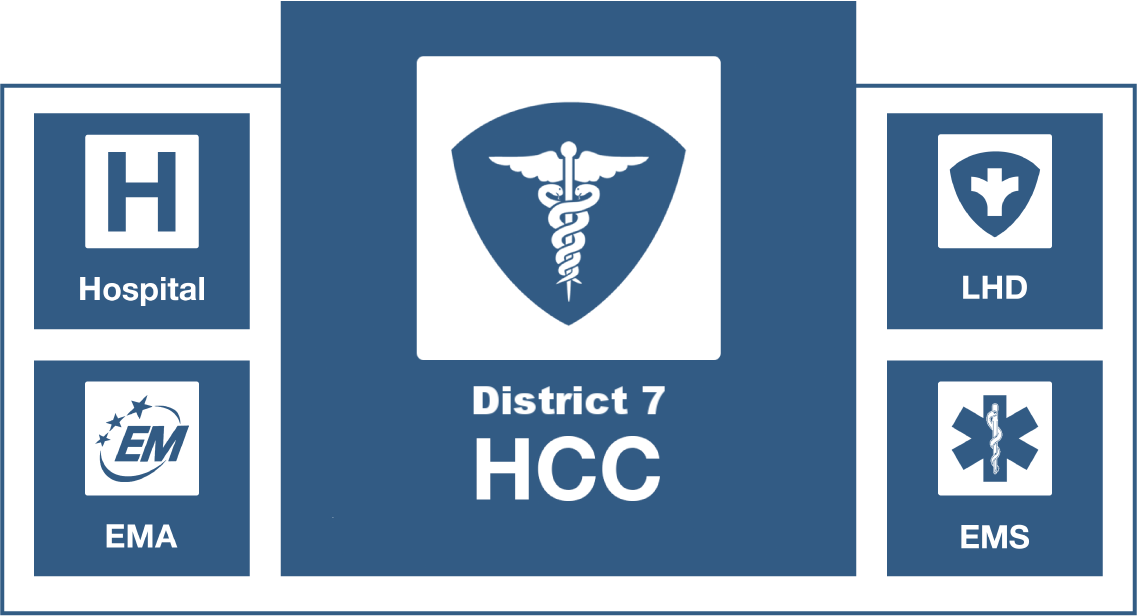DISTRICT 7 HCC OVERVIEW
Background
Healthcare coalitions (HCCs) play a critical role in providing and linking healthcare and public health preparedness and response capabilities. According to the 2017–2022 Health Care Preparedness and Response (HPP) Capabilities, HCCs are groups of individual healthcare and response organizations in a defined geographic location that serve as multi-agency coordinating groups and support and integrate with public health and medical services activities (i.e., Emergency Support Function #8 (ESF-8)). HCC member composition varies by jurisdiction but should include four core members: hospitals, emergency medical services (EMS), emergency management organizations, and public health agencies. Other partners may include behavioral health, long-term care, pharmacies, tribal entities, public safety, and many community-based and nongovernmental organizations. HCCs have functions during both preparedness and response. HCCs serve as communication hubs for participating entities and coordinate the sharing of resources, policy, and practices both prior to and during an event.
MISSION AND VISION
The Indiana District 7 Healthcare Coalition strives to develop and promote emergency preparedness, mitigation, response, and recovery capabilities of local healthcare entities by:
Strengthening community medical resiliency, surge capacity, and capability
Building relationships and partnerships
Developing emergency preparedness, mitigation, response, and recovery guidelines
Facilitating communication, information, and resource sharing
Utilization 0f current resources
Coordinating training, drills, and healthcare exercises
PURPOSE
To incentivize diverse and often competitive healthcare organizations and other community partners with differing priorities and objectives to reach to community members to work togt]ether to prepare for, respond to, and recover from emergencies and other incidents that impact the public’s health.
REGION 7 COUNTIES
Clay, Green, Owen, Park, Putnam, Sullivan, Vermillion, & Vigo
Healthcare Coalition Core Four
Emergency Medical Services (EMS)
Provides triage, out-of-hospital emergency medical care, and patient stabilization. Transportation of patients to appropriate definitive medical care facilities.
Emergency Management Agencies (EMA)
Tasked with the responsibilities for their county’s Comprehensive Emergency Management Plan to maintain a reliable and effective response to a large scale events such as WMD incidents, Epidemiological emergencies, and natural disasters.
Hospitals
Provide definitive care for patients, treat and release minor injuries and illness. Handling Mass Casualty Incidents resulting from WMD. Provide special services such as surgical intervention, intensive care, and emergency medicine.
Health Departments
Respond to epidemiological events. Provide laboratory analysis for biological agents. Identifies outbreak of diseases including Biological attacks. Plans for and implements mass prophylaxis.





